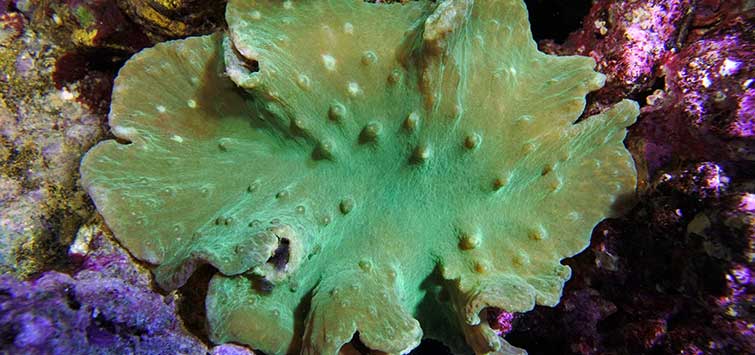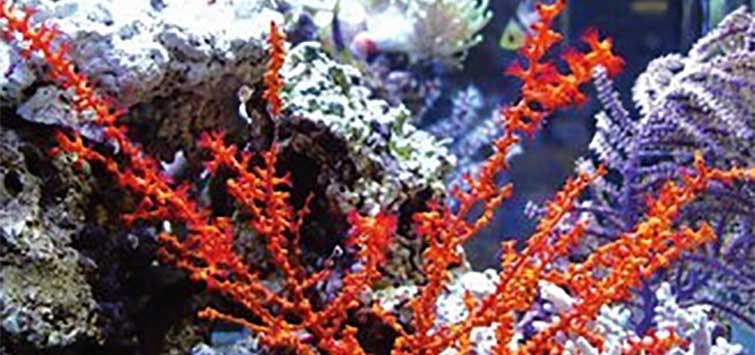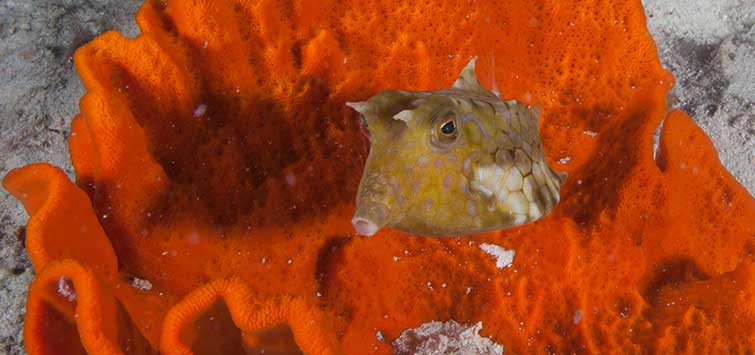Sinularia dura
Author: Bob Goemans
Common Names: Scalloped leather coral, cabbage coral, flat leather coral, lobed leather coral, leaf leather coral
Phylum: Cnidaria (stony coral)
Class: Anthozoa
Order: Alcyonacea
Family: Alcyoniidae
Range: Widespread throughout the Tropical Indo-Pacific Ocean
Natural Environment: This photosynthetic soft coral is found in a variety of different environmental areas, but it usually inhabits fairly shallow areas where strong currents exist. Because of its supportive sclerites (small calcium spines/plates embedded in its tissue) they
Captive Care
This is a readily available hardy soft coral, both in the wild and in the trade. Even though they can tolerate a wide spectrum of environmental conditions, they tend to do better in areas lit with bright light, either that of metal halides or fluorescents, and where moderate to strong water movement exists. Since they are photosynthetic, no direct feeding or special care is required, yet they seem to do better in environments that are somewhat nutrient rich. Placement in the aquarium can be wherever conditions favor it, but keep in mind it can grow quite large and quickly, and it therefore made shade-out nearby specimens sooner than anticipated. Provide enough space between them and their neighbors.
These are especially good corals for those new to the hobby, as they are as hardy as mushroom corals. This species is also a good shipper, and healthy specimens are often available in the trade. Besides being quite hardy, it's also disease resistant.
Notes
It's known that some Sinularia species are quite toxic to other coral genera, at a minimum inhibiting or stunting their growth, especially where some Acropora, Catalaphyllia, Euphyllia, Plerogyra, and Porites species are concerned. Nevertheless, I've maintained S. dura in many aquariums containing various species in these genera without ever seeing any harm to them. I do, however, recommend activated carbon be utilized at all times and properly maintained, as any terpenes possibly produced by this species or other Sinularia species can easily and safely be removed.
As for those wanting to propagate this species by fragmentation, I recommend doing it outside the confines of the aquarium, and allowing the frags and mother colony to heal in a quarantine tank before any portions are returned to the show aquarium.
Water Requirements: Calcium 380 to 430 ppm, alkalinity 3.5 meq/l, pH 8.1 to 8.2, specific gravity 1.024 to 1.026, and a temperature range of 74° to 83°F (23° to 28°C).

.png?h=595&iar=0&w=2781&hash=5FD5E69473BCC22199FBFA2FB71B6033)



